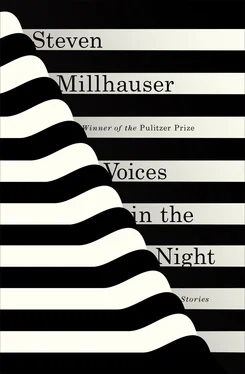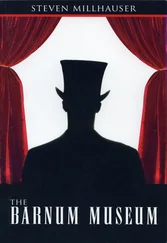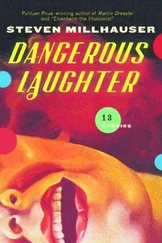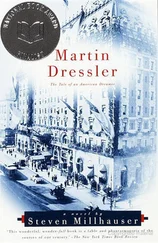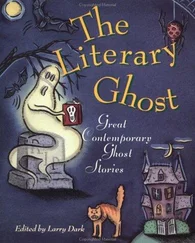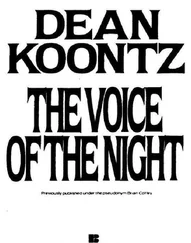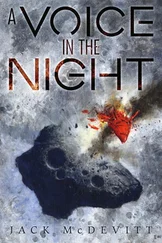Even as the epidemic of suicide raged through our high school, we noticed that its effects were being felt in two opposite directions: upward, in the colleges where our older sons and daughters were finishing their spring semester, and downward, in the William Barnes Middle School and our six elementary schools. A college junior who had graduated from our high school fastened a pair of satin-covered foam angel wings to his shoulders and leaped to his death from the top of the astronomy building; a college sophomore painted the word “luminosity” in neon-green letters on the side of her car, drove through a guardrail on the outskirts of her rural campus, and sailed into the air above a much-photographed ravine. Four seventh-graders were found in a stand of spruce between two backyards after they had swallowed rat poison dissolved in cherry Kool-Aid. Howard Dietz, a fourth-grader, pried open his father’s gun cabinet one day after school and, sitting on the edge of his bed, opened his mouth, placed the barrel of a twenty-gauge shotgun between his teeth, which had recently been fitted with braces decorated with metallic-blue brackets, and pulled the trigger. One group of sixth-grade girls initiated a brief vogue: wearing jean shorts, bathing-suit tops, and bright red lipstick, they dragged a barbecue grill into a backyard toolshed, shut the door, and inhaled the fatal fumes of charcoal briquettes. We held town meetings, consulted with crisis counselors and family therapists, engaged in lengthy discussions with our children. We dreaded opening the morning paper.
What haunted us, apart from the deaths themselves, was the spirit in which the perpetrators appeared to seek their own destruction. For it was difficult to deny that a majority of deaths were chosen in a mood of adventure, of high daring, even of exhilaration. Here and there, to be sure, an adolescent boy rejected by his girlfriend swallowed a fistful of barbiturates, a depressed girl who felt unloved slipped into a tub of warm water and slit her wrists. These deaths were in some sense comforting, almost pleasing, for we could imagine ourselves, under similar circumstances, arriving at the same decision. But what were we to make of the atmosphere of excitement evident among the others, their sense of embracing the unknown with something like fervor? Death as a spirited game, death as a challenge, as an intriguing art form, an expression of originality — this death was something we knew nothing about, we who understood what it meant to wake in the night with dread in our hearts.
Excitements falter. Fads fade away. Although we were dazed with exhaustion and anxiety, we remained stubbornly hopeful, for we knew that crises of adolescence do not last. And in fact the school suicides began to diminish, without actually coming to an end. At the same time we were unable to ignore new signs of trouble. It happened here and there — a marriage suicide, the suicide of a young mother. We understood, with a kind of rage, that the same parents who listened to their sons’ rock bands and imitated their daughters’ styles in hip-hugger jeans and spaghetti-strap tank tops were not immune to the latest craze. As the deaths spread among the adults of our town, we began to hear talk of the Blue Iris, an association all too clearly inspired by the Black Rose but with a crucial difference. Whereas the Black Rose promoted suicide as a method of imposing a design on the randomness of life, the Blue Iris spoke of death as the culminating moment of existence — the climactic event to which every life aspired. Precisely for this reason, death should be chosen at a moment of fulfillment. We began to hear of sexual suicides, ingeniously enacted at the height of lovemaking. Couples began to look to death as an erotic stimulus, a mechanism for ultimate release, as though they were seeking, in the act of self-murder, a cosmic orgasm. Others chose different moments of heightened feeling: a wedding ceremony, a longed-for promotion, a sudden eruption of irrational happiness. We took note of these suicides with a certain disdain, for they seemed too closely modeled on a fading teenage fashion, while at the same time they made our blood tremble. The new suicides were our neighbors; they were ourselves.
Frank and Rita Sorensen were a handsome couple in their late thirties, with the sort of marriage many of us envied. He was a real estate developer who had brought a new recreational center to the west end of town, she was an interior decorator who had improved many of our kitchens and dens. They seemed a happier, more talented, more successful version of ourselves. They lived with their two young daughters, Sigrid and Belle, in a big house on Roland Terrace, where we were present at their summer barbecues and winter dinner parties. We knew the sound of their laughter, the energy of their glances, we could feel the easy flow of affection between them. Although they were happy, in a way that was impossible to doubt, it’s true that we could feel in them, at times, a shadow of disappointment, a ripple of disenchantment, of a kind that struck us as familiar, for their lives, like ours, were in a certain manner complete, they could look forward to years of pleasure and success and laudable accomplishment but to nothing more — it was as if, somewhere along the way, they had misplaced a youthful sense of discovery, a sense that life is an adventure that might lead to anything on earth. Like us, they accepted their happiness without thinking much about it; like ours, their happiness was complicated by another feeling that wasn’t sorrow but that closed in on them from time to time. One day they joined the Blue Iris. We noticed at once their new zest, their new seriousness. They attended meetings, invited us to lakeshore cookouts and Friday night pool parties, drank hard, laughed with their heads thrown back, passed the crab dip. One night they retired to their bedroom, lay down on their bed fully clothed, raised their matching pistols with ivory-inlaid rosewood grips, and shot themselves in the head. A typed note in a sealed envelope explained that they were fully conscious of what they were doing and, more in love than ever, chose to complete their lives on a crest of happiness. They urged others to join them in this act of fulfillment.
Some accused the Sorensens of harboring a dark secret, but for most of us the tone of the note was all too familiar. Others blamed the Blue Iris, which they attacked as a false religion, a satanic cult dedicated to the corruption of the will to live. Those of us who had laughed late into the night with the Sorensens said nothing, for we saw in their deaths still another sign that our town had lost its way.
Indeed, it’s often difficult to recall a more innocent time, when we cheerfully planned birthday parties for our children and looked forward to family picnics on shady redwood tables beside the stream. We have grown accustomed to the daily suicide reports, the weekly death counts — sometimes high, sometimes low — now a lull, now a flare-up — here a bachelor in his leather recliner in front of the flat-screen TV, there a group of close-knit friends in cushioned chaises around the swimming pool. On nearly every block, a house has been struck. People approaching one another on the sidewalk shift their eyes suddenly, thinking: Will he be next? Despite it all, we manage to carry on, as if we don’t know what else there might be to do. The daily paper continues to land on front porches, even of abandoned houses. Children skip rope. Hedge-trimmers buzz. Lawn mowers sound in the air of summer.
In such a world, people seek answers. Some say we’re being punished for the way we live — the casual adulteries, the heavy drinking, the high divorce rate, the sexual promiscuity among our teenagers, the violent visual culture among our children. Others, while rejecting the punishment hypothesis as a throwback to moribund theological systems, nevertheless claim that our town has carried certain forms of behavior to their logical conclusion, for a culture based on material pleasures must necessarily lead to an embrace of the ultimate material fact, which is death. Still others, dismissing this argument as a secular version of the theological critique, insist that our town represents a new, healthy attitude toward the conduct of life: disdaining evasion, we bravely face the truth of our mortality.
Читать дальше
